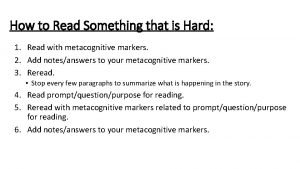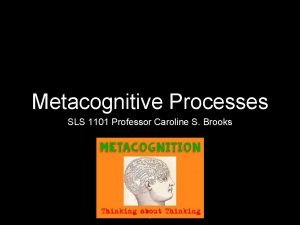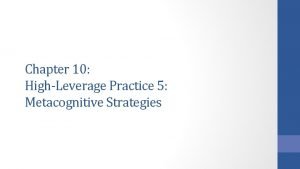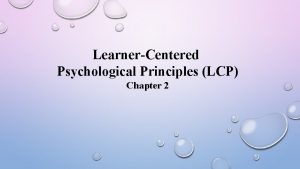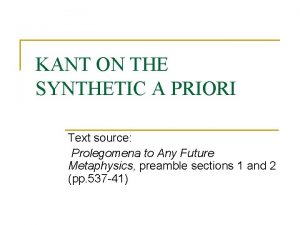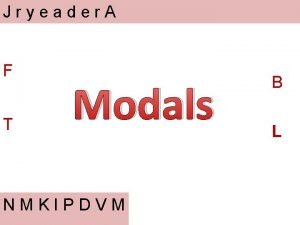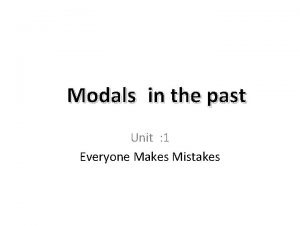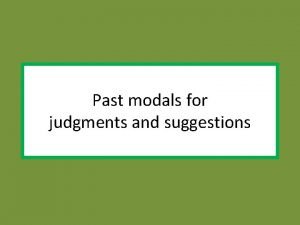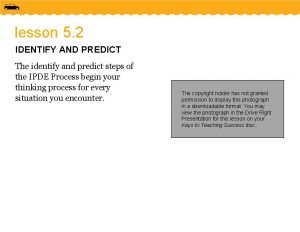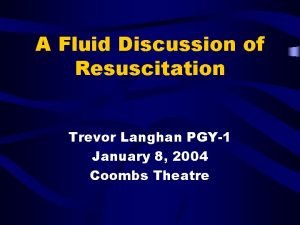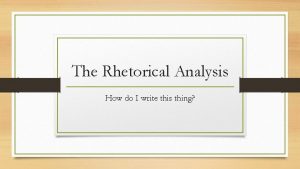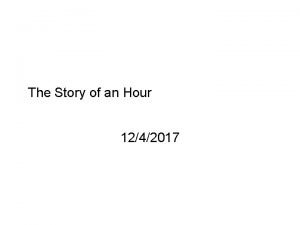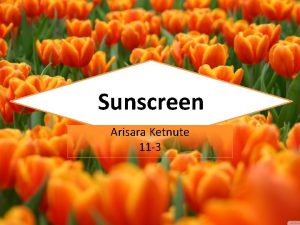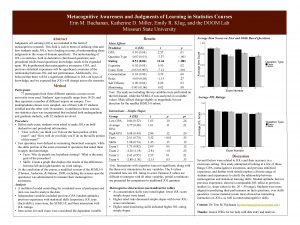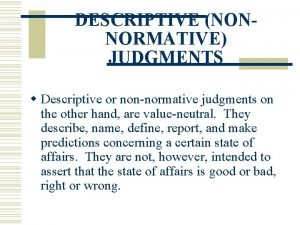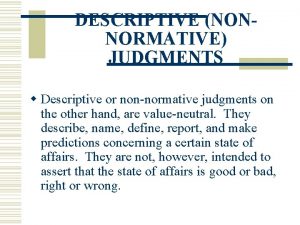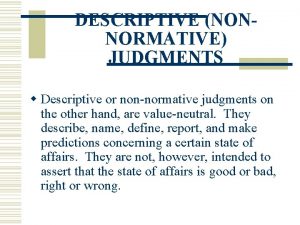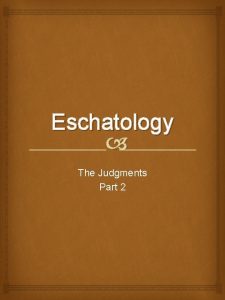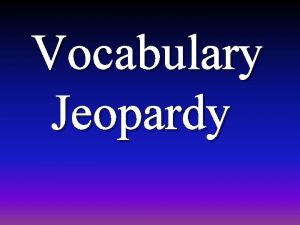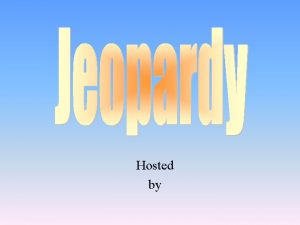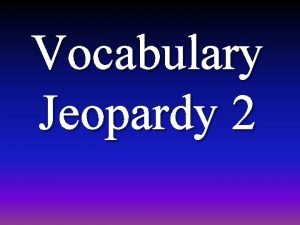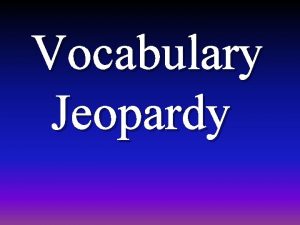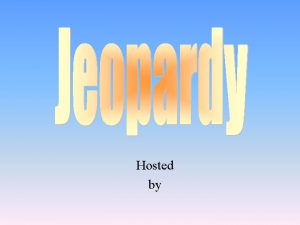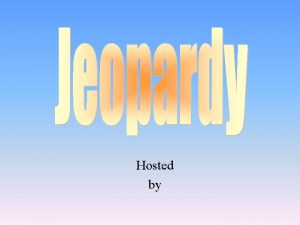Association as Choice What Metacognitive Judgments Tell Us






















- Slides: 22

Association as Choice: What Metacognitive Judgments Tell Us about the Associative Processor William S. Maki University of Arizona Erin Buchanan Missouri State University Paper presented at the Psychonomic Society meeting, St. Louis November 20, 2010

Organization of this talk 1. Background on associative measurements 2. Phenomena of interest 3. Application of choice model 4. A possible characteristic of an associative processor

1. Background on associative measurements 2. Phenomena of interest 3. Application of choice model 4. A possible characteristic of an associative processor

The free association task Please write the first word that comes to your mind in response to each of the following words: LOST ______ OLD ______ WORLD ______ ELECTION ______

The word association norms Nelson, Mc. Evoy, & Schreiber, 2004 • • > 5, 000 cues > 72, 000 cue-response pairs ~ 150 Ss per pair p(response | cue) forward strength (FSG) – CANARY BIRD • p(cue | response) backward strength (BSG) – BIRD CANARY

The associative judgment task Assume 100 college students from around the nation gave responses to each CUE word. How many of these 100 students do you think would have given the RESPONSE word? CUE RESPONSE N (0 – 100) LAMP LIGHT ______ FIND SEEK ______ ELECTION DISGUST ______

1. Background on associative measurements 2. Phenomena of interest 3. Application of choice model 4. A possible characteristic of an associative processor

The JAM function (Judging Associative Memory): An operating characteristic for associative processing (Maki, 2007 a; Koriat, Fiedler, & Bjork, 2006)

Error correction experiment: Transfer results

Interaction of forward and backward strengths

1. Background on associative measurements 2. Phenomena of interest 3. Application of choice model 4. A possible characteristic of an associative processor

Association as choice • Free association is analogous to other choices – Independent from irrelevant alternatives • Respond to CANARY, not TRUCK – Set is finite, mutually exclusive, and exhaustive – Objects are represented by identical but independent distributions • Mathematics of choice can then be applied – Yellott, JMP, 1977

Application of choice model (Luce) to free association

Computing offset values 1) Adjust means of distributions ü double exponentials 2) 3) • • Draw random samples for p(FA) Compute error Yellott, JMP, 1977. Nelson, Mc. Evoy, & Dennis, M&C, 2000. Associates of CANARY: Bird, Yellow, Sing, Song

Application of choice model to associative judgments

Application of choice model to associative judgments

Application of choice model to free association and associative judgments

1. Background on associative measurements 2. Phenomena of interest 3. Application of choice model 4. A possible characteristic of an associative processor

Does theory-based debiasing alter JAM? (Koriat & Bjork; Maki & Buchanan) • Control – Standard JAM instructions – Replicate FSG x BSG • Instructed – Debiasing instructions – Informed about BSG – Attend only to FSG • • Instructions reduce bias … … but do not modulate associative processing.

Effects of theory-based debiasing with error correction • • • Control group given standard JAM instructions Experimental group given debiasing instructions supplemented by error correction examples More potent manipulation lowered intercept AND increased slope … … but FSG x BSG interaction still present. Model fit with common w. BSG Alternative explanations – – Why selective effect on FSG? Effect mediated by deliberative processing? 100 90 Rated association (JAM) • 80 70 60 50 40 30 Ctrl-Low Ctrl-High 20 Exp-Low 10 Exp-High 0 0 10 20 30 40 50 60 70 80 90 100 Forward associative strength

Conclusions • Associative judgments based on a source of bias and the results of associative processing. • The “associative processor” combines forward and backward strengths such that judgments of FSG are amplified by BSG. • Associative combination appears impervious to debiasing treatments. – Cognitively impenetrable ? ? ?

That’s all … • Thanks for your attention ! • Acknowledgements – Doug Nelson & Cathy Mc. Evoy (for their association norms) – Robert Nosofsky (for relating the Nelson-Mc. Evoy-Dennis model to RUMs)
 How did joby join the army
How did joby join the army What is metacognitive strategies
What is metacognitive strategies 5 metacognitive strategies
5 metacognitive strategies Metacognition cambridge
Metacognition cambridge 6 principles of cognitive and metacognitive factors
6 principles of cognitive and metacognitive factors Synthetic a priori judgments
Synthetic a priori judgments I wasn't or i didn't
I wasn't or i didn't Perfect modals 1
Perfect modals 1 Perfect modals ejemplos
Perfect modals ejemplos What is the orderly visual search pattern
What is the orderly visual search pattern Good choice or bad choice
Good choice or bad choice Tell me what you eat and i shall tell you what you are
Tell me what you eat and i shall tell you what you are Show not tell feelings
Show not tell feelings Fluid of choice
Fluid of choice What are musical messages written around the brand
What are musical messages written around the brand Rhetorical essay
Rhetorical essay Ap lit practice test multiple-choice
Ap lit practice test multiple-choice Oea choice trust
Oea choice trust The story of an hour plot diagram
The story of an hour plot diagram Seaside poems ks1
Seaside poems ks1 Puala's choice
Puala's choice Persuaive words
Persuaive words Standard choice offer dominion east ohio
Standard choice offer dominion east ohio
